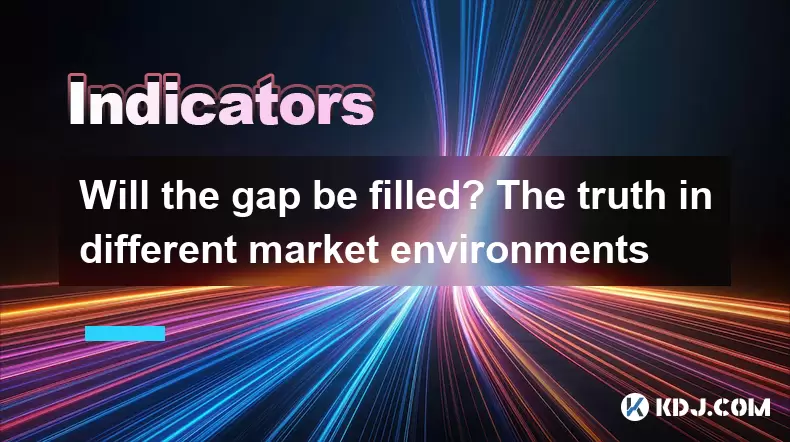-
 Bitcoin
Bitcoin $119900
0.91% -
 Ethereum
Ethereum $4576
8.55% -
 XRP
XRP $3.264
4.05% -
 Tether USDt
Tether USDt $0.9998
-0.05% -
 BNB
BNB $834.7
4.17% -
 Solana
Solana $191.8
9.96% -
 USDC
USDC $0.9998
-0.02% -
 Dogecoin
Dogecoin $0.2363
6.08% -
 TRON
TRON $0.3525
2.56% -
 Cardano
Cardano $0.8419
9.12% -
 Chainlink
Chainlink $23.19
9.97% -
 Hyperliquid
Hyperliquid $44.97
4.53% -
 Stellar
Stellar $0.4489
4.20% -
 Sui
Sui $3.876
6.19% -
 Bitcoin Cash
Bitcoin Cash $618.1
7.14% -
 Hedera
Hedera $0.2617
6.55% -
 Ethena USDe
Ethena USDe $1.000
-0.03% -
 Avalanche
Avalanche $24.61
7.96% -
 Litecoin
Litecoin $131.7
9.52% -
 Toncoin
Toncoin $3.502
3.62% -
 UNUS SED LEO
UNUS SED LEO $9.093
1.32% -
 Shiba Inu
Shiba Inu $0.00001358
5.37% -
 Uniswap
Uniswap $11.50
5.05% -
 Polkadot
Polkadot $4.150
7.77% -
 Dai
Dai $0.9997
-0.05% -
 Cronos
Cronos $0.1650
-0.75% -
 Ethena
Ethena $0.7981
2.06% -
 Pepe
Pepe $0.00001216
8.64% -
 Bitget Token
Bitget Token $4.467
1.74% -
 Aave
Aave $319.2
9.18%
Will the gap be filled? The truth in different market environments
In crypto trading, gaps occur when prices jump levels without trading; filling depends on market environment, liquidity, and sentiment.
Jun 09, 2025 at 02:42 am

The concept of "gap filling" is a common topic of discussion within the cryptocurrency trading community. A gap occurs when the price of a cryptocurrency jumps from one level to another without any trading occurring in between. This can happen due to various factors, such as significant news events, market sentiment shifts, or overnight trading halts. The question of whether these gaps will be filled is a complex one, as it depends heavily on the market environment at the time of the gap. In this article, we will explore the truth behind gap filling in different market environments within the cryptocurrency circle.
Understanding Gaps in Cryptocurrency Markets
Gaps in the cryptocurrency market are typically categorized into three types: breakaway gaps, runaway gaps, and exhaustion gaps. Each type of gap has different implications for traders and investors.
Breakaway gaps occur when the price breaks out of a consolidation or trading range, signaling the start of a new trend. These gaps are often seen as bullish or bearish depending on the direction of the breakout.
Runaway gaps, also known as continuation gaps, happen during an ongoing trend and indicate that the trend is likely to continue. These gaps are significant for traders looking to ride the trend.
Exhaustion gaps appear near the end of a trend and suggest that the trend is running out of steam. These gaps are critical for traders looking to exit their positions before a potential reversal.
Understanding the type of gap that has occurred is essential for determining whether it will be filled and how to approach trading around it.
Factors Influencing Gap Filling
Several factors can influence whether a gap in the cryptocurrency market will be filled. These include:
Market Liquidity: In a highly liquid market, gaps are more likely to be filled quickly as there are more participants and trading volume. Conversely, in a less liquid market, gaps may remain unfilled for longer periods.
Market Sentiment: The overall sentiment in the market can greatly affect whether a gap is filled. If the sentiment is strongly bullish or bearish, the gap may remain unfilled as the market continues in that direction.
News and Events: Significant news or events can cause gaps to occur, and the subsequent reaction to these events can determine whether the gap is filled. For example, if a positive news event causes a gap up, but the market later reevaluates the news, the gap may be filled.
Technical Analysis: Technical indicators and chart patterns can provide insights into whether a gap is likely to be filled. For instance, if a gap occurs near a significant support or resistance level, it may be more likely to be filled.
Gap Filling in Bullish Market Environments
In a bullish market environment, gaps are often seen as opportunities for traders to enter long positions. However, the likelihood of these gaps being filled depends on the strength of the bullish trend.
If the bullish trend is strong and supported by positive fundamentals, gaps are less likely to be filled. The market momentum can carry the price higher, leaving the gap unfilled.
Conversely, if the bullish trend is weakening or facing resistance, gaps may be filled as the market consolidates or reverses.
Traders in a bullish market need to monitor the overall trend strength and key technical levels to determine the likelihood of gap filling. For example, if a gap occurs near a significant resistance level, it may be more likely to be filled as the market tests that level.
Gap Filling in Bearish Market Environments
In a bearish market environment, gaps are often seen as opportunities for traders to enter short positions. The dynamics of gap filling in a bearish market are similar to those in a bullish market but with a few key differences.
In a strong bearish trend, gaps are less likely to be filled as the market continues to move lower. The bearish momentum can carry the price down, leaving the gap unfilled.
If the bearish trend is weakening or facing support, gaps may be filled as the market consolidates or reverses.
Traders in a bearish market need to monitor the overall trend strength and key technical levels to determine the likelihood of gap filling. For example, if a gap occurs near a significant support level, it may be more likely to be filled as the market tests that level.
Gap Filling in Sideways Market Environments
In a sideways market environment, gaps are often filled more frequently than in trending markets. This is because the market lacks a clear direction, and price movements tend to oscillate within a range.
Gaps in a sideways market are often seen as opportunities for traders to enter positions in anticipation of the gap being filled. The lack of a strong trend means that the price is more likely to revert to the mean, filling the gap.
Traders in a sideways market need to monitor the range boundaries and key technical levels to determine the likelihood of gap filling. For example, if a gap occurs near the upper or lower boundary of the range, it may be more likely to be filled as the market reverts to the mean.
Strategies for Trading Gaps
Trading gaps in the cryptocurrency market requires a solid understanding of the market environment and the factors influencing gap filling. Here are some strategies that traders can use:
Gap and Go Strategy: This strategy involves entering a position in the direction of the gap, anticipating that the market will continue in that direction. This strategy is more suitable for strong trending markets.
Fade the Gap Strategy: This strategy involves entering a position in the opposite direction of the gap, anticipating that the gap will be filled. This strategy is more suitable for sideways or weak trending markets.
Gap Fill and Reverse Strategy: This strategy involves waiting for the gap to be filled and then entering a position in the direction of the new trend. This strategy is suitable for markets where the trend is likely to reverse after the gap is filled.
Each of these strategies requires careful analysis of the market environment and the type of gap that has occurred. Traders need to be flexible and adapt their strategies based on the specific conditions of the market.
Technical Analysis Tools for Gap Trading
Technical analysis plays a crucial role in determining whether a gap will be filled and how to trade around it. Here are some key technical analysis tools that traders can use:
Support and Resistance Levels: Identifying key support and resistance levels can help traders determine the likelihood of a gap being filled. If a gap occurs near a significant level, it may be more likely to be filled as the market tests that level.
Moving Averages: Moving averages can help traders identify the overall trend and determine the strength of the trend. If a gap occurs in the direction of the trend and the moving averages are aligned, the gap may be less likely to be filled.
Volume Analysis: Analyzing trading volume can provide insights into the strength of the gap. If the gap is accompanied by high volume, it may be less likely to be filled as it indicates strong market participation.
Chart Patterns: Identifying chart patterns such as head and shoulders, double tops, or double bottoms can help traders anticipate potential reversals and determine the likelihood of a gap being filled.
By combining these technical analysis tools, traders can develop a more comprehensive understanding of the market environment and make more informed trading decisions around gaps.
Frequently Asked Questions
Q: How can I identify the type of gap in the cryptocurrency market?
A: To identify the type of gap, you need to analyze the context in which the gap occurs. Breakaway gaps happen at the start of a new trend, runaway gaps occur during an ongoing trend, and exhaustion gaps appear near the end of a trend. Use technical analysis tools such as trend lines, moving averages, and chart patterns to determine the type of gap.
Q: What are some common mistakes traders make when trading gaps?
A: Common mistakes include entering positions too early without waiting for confirmation, failing to consider the overall market environment, and not setting proper stop-loss orders. Traders should also avoid overtrading and chasing every gap without a solid strategy.
Q: Can gaps be used as a reliable indicator for trading decisions?
A: Gaps can be a useful indicator, but they should not be used in isolation. Traders need to consider other factors such as market sentiment, liquidity, and technical analysis to make informed trading decisions. Gaps are just one piece of the puzzle in the broader context of the market.
Q: How does the time of day affect gap filling in the cryptocurrency market?
A: The time of day can impact gap filling, especially in markets that trade 24/7 like cryptocurrencies. Gaps that occur during low liquidity periods, such as overnight, may take longer to fill than gaps that occur during high liquidity periods, such as major trading sessions. Traders need to be aware of these time-related factors when trading gaps.
Disclaimer:info@kdj.com
The information provided is not trading advice. kdj.com does not assume any responsibility for any investments made based on the information provided in this article. Cryptocurrencies are highly volatile and it is highly recommended that you invest with caution after thorough research!
If you believe that the content used on this website infringes your copyright, please contact us immediately (info@kdj.com) and we will delete it promptly.
- Unich's OTC Exchange: Surging with $1.2B Volume – What's the Hype?
- 2025-08-13 02:50:11
- MoonBull's Explosive Moves: Your Crypto Whitelist Ticket to Ride!
- 2025-08-13 02:30:11
- MAGACOIN Finance: Don't Miss the Presale Bonus!
- 2025-08-13 02:30:11
- Trump's Crypto Kingdom: $2.4 Billion and Counting
- 2025-08-13 02:50:11
- Solana, LSTs, and SEC Approval: A New Dawn for Crypto?
- 2025-08-13 02:55:12
- Bitcoin's Profit Surge: Unpacking the BTC Value Boom
- 2025-08-13 02:55:12
Related knowledge

What does it mean when the +DI and -DI cross frequently in the DMI indicator but the ADX is flattening?
Aug 11,2025 at 03:15am
Understanding the DMI Indicator ComponentsThe Directional Movement Index (DMI) is a technical analysis tool composed of three lines: the +DI (Positive...

What does it mean when the moving average, MACD, and RSI all send buy signals simultaneously?
Aug 11,2025 at 01:42pm
Understanding the Convergence of Technical IndicatorsWhen the moving average, MACD, and RSI all generate buy signals at the same time, traders interpr...

What does it mean when the price is trading above the SAR indicator but the red dots are densely packed?
Aug 09,2025 at 11:49pm
Understanding the SAR Indicator and Its Visual SignalsThe SAR (Parabolic Stop and Reverse) indicator is a technical analysis tool used primarily to de...

What does it mean when the candlestick chart forms a "Morning Star" but trading volume is sluggish?
Aug 12,2025 at 06:28pm
Understanding the Morning Star Candlestick PatternThe Morning Star is a three-candle bullish reversal pattern commonly observed in cryptocurrency pric...

What does it mean when the RSI indicator moves sideways for an extended period between 40 and 60?
Aug 10,2025 at 08:08am
Understanding the RSI Indicator in Cryptocurrency TradingThe Relative Strength Index (RSI) is a momentum oscillator widely used in cryptocurrency trad...

What does it mean when the MACD histogram continues to shorten but the price reaches a new high?
Aug 09,2025 at 09:29pm
Understanding the MACD Histogram and Its ComponentsThe MACD (Moving Average Convergence Divergence) indicator is a widely used technical analysis tool...

What does it mean when the +DI and -DI cross frequently in the DMI indicator but the ADX is flattening?
Aug 11,2025 at 03:15am
Understanding the DMI Indicator ComponentsThe Directional Movement Index (DMI) is a technical analysis tool composed of three lines: the +DI (Positive...

What does it mean when the moving average, MACD, and RSI all send buy signals simultaneously?
Aug 11,2025 at 01:42pm
Understanding the Convergence of Technical IndicatorsWhen the moving average, MACD, and RSI all generate buy signals at the same time, traders interpr...

What does it mean when the price is trading above the SAR indicator but the red dots are densely packed?
Aug 09,2025 at 11:49pm
Understanding the SAR Indicator and Its Visual SignalsThe SAR (Parabolic Stop and Reverse) indicator is a technical analysis tool used primarily to de...

What does it mean when the candlestick chart forms a "Morning Star" but trading volume is sluggish?
Aug 12,2025 at 06:28pm
Understanding the Morning Star Candlestick PatternThe Morning Star is a three-candle bullish reversal pattern commonly observed in cryptocurrency pric...

What does it mean when the RSI indicator moves sideways for an extended period between 40 and 60?
Aug 10,2025 at 08:08am
Understanding the RSI Indicator in Cryptocurrency TradingThe Relative Strength Index (RSI) is a momentum oscillator widely used in cryptocurrency trad...

What does it mean when the MACD histogram continues to shorten but the price reaches a new high?
Aug 09,2025 at 09:29pm
Understanding the MACD Histogram and Its ComponentsThe MACD (Moving Average Convergence Divergence) indicator is a widely used technical analysis tool...
See all articles

























































































